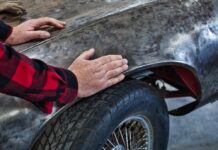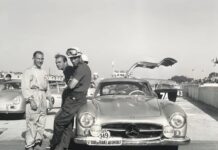America’s first Formula 1 car headlines rare race cars at Monterey.
In Monterey, California, this August 15-17, Mecum Auctions will host its much anticipated annual auction event at the Del Monte Golf Course adjacent to the Hyatt Regency Monterey Hotel and Spa. Among the signature attractions that are sure to inspire folks to complete their annual pilgrimage to the famed peninsula is an impressive array of competitive racing machines, headlined by America’s first Formula 1 car: a 1960 Scarab, chassis GP-2—one of three examples produced for the 1960 Formula 1 season.
Chuck Daigh wheeled the Scarab to a 10th-place finish at the 1960 U.S. Grand Prix in Riverside, California, and the car was also the final chapter in the racing passion play for the fascinating 24-year-old owner/driver Lance Reventlow. Playing their supporting roles to the Scarab at the upcoming Monterey auction are a 1983 RAM March 01 Formula 1 car, a 1961 Lotus 20/22 Formula Junior Monoposto and a wholly unique 2003 Lola B02/00 Two-Seater.
1960 Scarab Formula 1
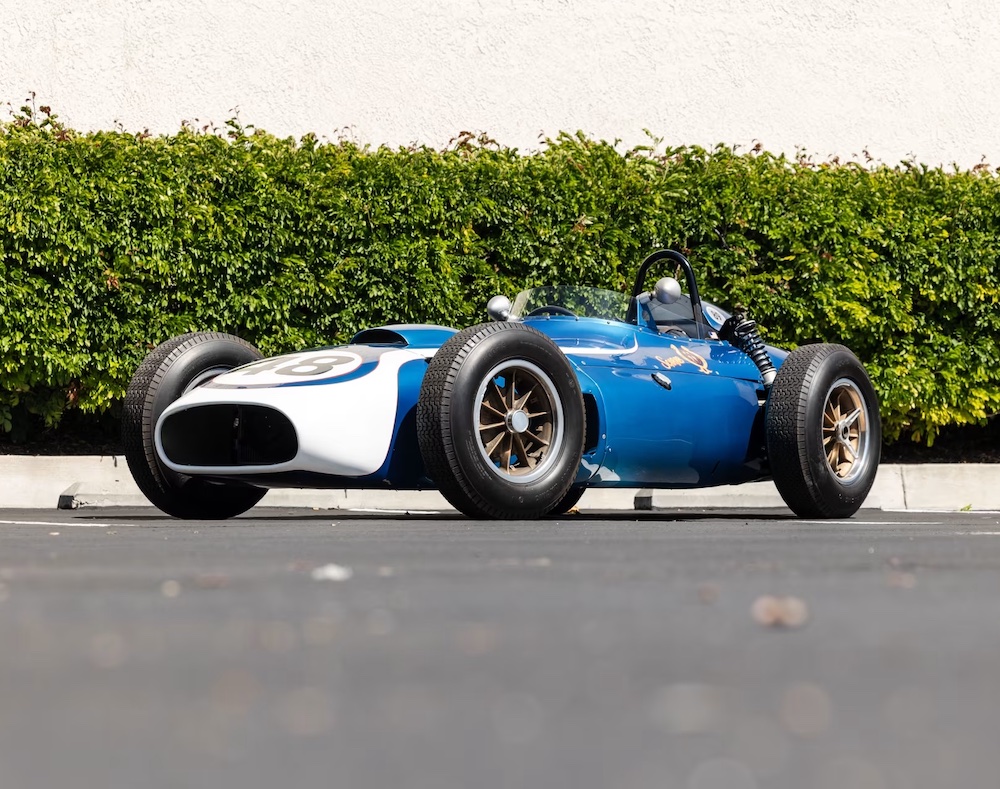
While Daigh’s 10th-place finish in America’s lone 1960 Formula 1 race was this car’s best result, it also marked the first time an American car had ever been entered into Formula 1 competition. Still, the story of young owner/driver Lance Reventlow is undoubtedly the most fascinating bit of history here.
The Scarab race cars were the brainchild of Reventlow, who was the son of socialite Barbara Hutton. She was, herself, the heir to the immense FW Woolworth fortune that made her one of the wealthiest women in the world. Reventlow was straight out of central casting—a playboy who lived a life of glamor and regularly dated Hollywood starlets, eventually marrying Jill St. John in 1960 and later Cheryl Holdridge in 1964. In today’s world, between the paparazzi and social media, Reventlow would have been both a media darling and famous for being famous.
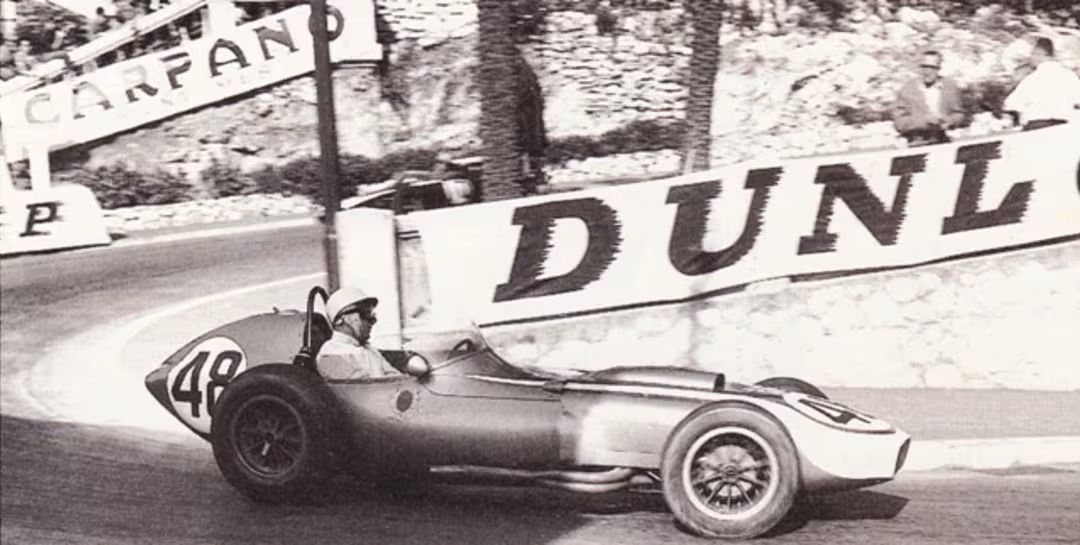
Although Scarab’s history is relatively brief, Reventlow poured immense resources into his racing pursuits. A Scarab sports car won the 1958 SCCA Championship with Daigh doing the driving. This motivated Reventlow to commit even more money to the project with an eye toward the ultimate challenge. In late 1958, at the tender age of 22, Reventlow decided that building a Formula 1 car was his destiny. The aggressive plan was to be ready for the 1960 season.
Reventlow Automobiles had been formed as the parent company of Scarab. Demonstrating that his wealth had few bounds, Reventlow proceeded to hire some of the top engineers in motorsports, including Dick Troutman, Tom Barnes, Jim Travers, Frank Coon and Phil Remington, as well as pinstripe master Von Dutch.
Troutman and Barnes were already big names in sports car racing. Remington would go on to become one of the key people at Shelby American. Travers and Coon were among the most respected men at any level of the sport. In 1952, Travers and Coon had teamed with one of the greatest drivers in history, Bill Vukovich. This trio dominated four consecutive Indianapolis 500s. Vukovich nearly won in 1952, leading most of the race until nine laps to go, when a steering linkage broke. Undeterred, he ran away with Indianapolis 500 wins in both 1953 and 1954. Tragically, Vukovich was killed in an accident while leading the 1955 Indianapolis 500. Following the Vukovich accident, Travers and Coon moved on and teamed up with Troutman, Barnes and Remington. This magical group designed, built and worked on the Scarab Formula 1 car, while the artistic Von Dutch made the finished product look pretty.
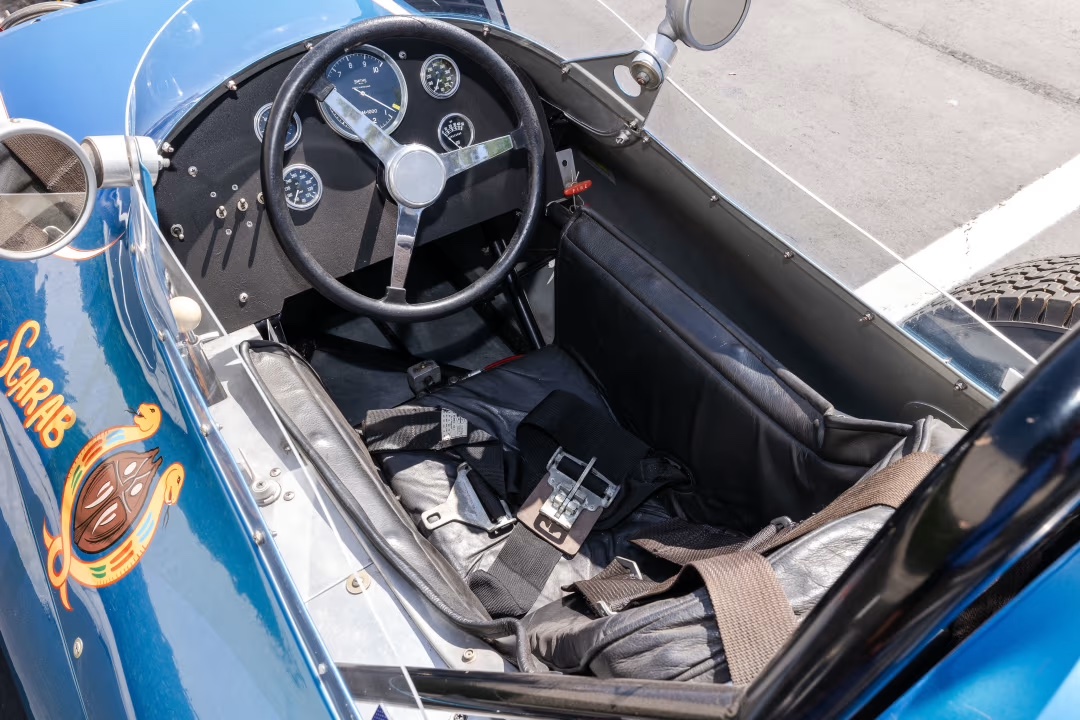
Leo Goosen of Offenhauser fame was employed to develop a purpose-built racing engine for Scarab. Goosen decided to lay the engine on its side to reduce the center of gravity. This trick setup had been employed to great success on winning Offenhauser engines at the Indianapolis 500, most notably with Sam Hanks in 1957 and Jimmy Bryan in 1958. Utilizing all of the secrets employed by Offenhauser, the 2443cc double overhead-cam Inline 4-cylinder engine sported Hilborn fuel injection through a twin-cam cylinder head with desmodromic valves. It was then mated to a modified 4-speed manual transmission sourced from the Chevrolet Corvette.
Daigh was not the only driver. Reventlow himself drove the car in the 1960 Belgian Grand Prix at the fearsome Spa-Francorchamps circuit. Chassis GP-2 was also driven in practice for the Monaco Grand Prix by Stirling Moss and in practice sessions by Richie Ginther in France, Great Britain and Portugal.
As can be seen from the lines of chassis GP-2, the car was beautifully executed, with a striking blue and white No. 48 livery. The biggest shortcoming of the Scarab was that it was a front engine car designed at a time when the rear engine revolution had begun to hit Formula 1. Jack Brabham captured both the 1959 and 1960 Formula 1 World Championships wheeling a rear-engined Cooper Climax.
The answer to make Scarab more competitive was obvious: build a car with the engine in the rear. Much like his other pursuits in life, Reventlow soon lost interest in the project. Before operations wound down, a rear-engined Scarab with a Buick engine was built, but it was never raced. Reventlow soon pulled out of his shop in Venice, California, which became the home of Shelby American, where Remington immediately joined forces with Carroll Shelby and became one of the most important people in building the success of the iconic brand.
Sadly, in 1972, Reventlow perished at the age of 36 in a plane crash in Colorado. Although he died at a young age, there is no question that Reventlow lived a life chock-full of fun and adventure.
Today, the Scarab Formula 1 car presents much as it did in 1960. After a comprehensive multiyear restoration by original Scarab engineer Dick Troutman and driver Chuck Daigh, chassis GP-2 was driven by Brian Redman at the 2001 Goodwood Festival of Speed in England. It has also been shown at the Amelia Island Concours d’Elegance and was formerly on display at the Riverside International Automotive Museum.
Currently eligible to run in the Historic Grand Prix of Monaco, which regularly takes place two weeks prior to Formula 1’s Monaco Grand Prix, the Scarab is once again poised to honor the glamorous jet-set lifestyle of Reventlow.
1983 RAM March 01 Formula 1
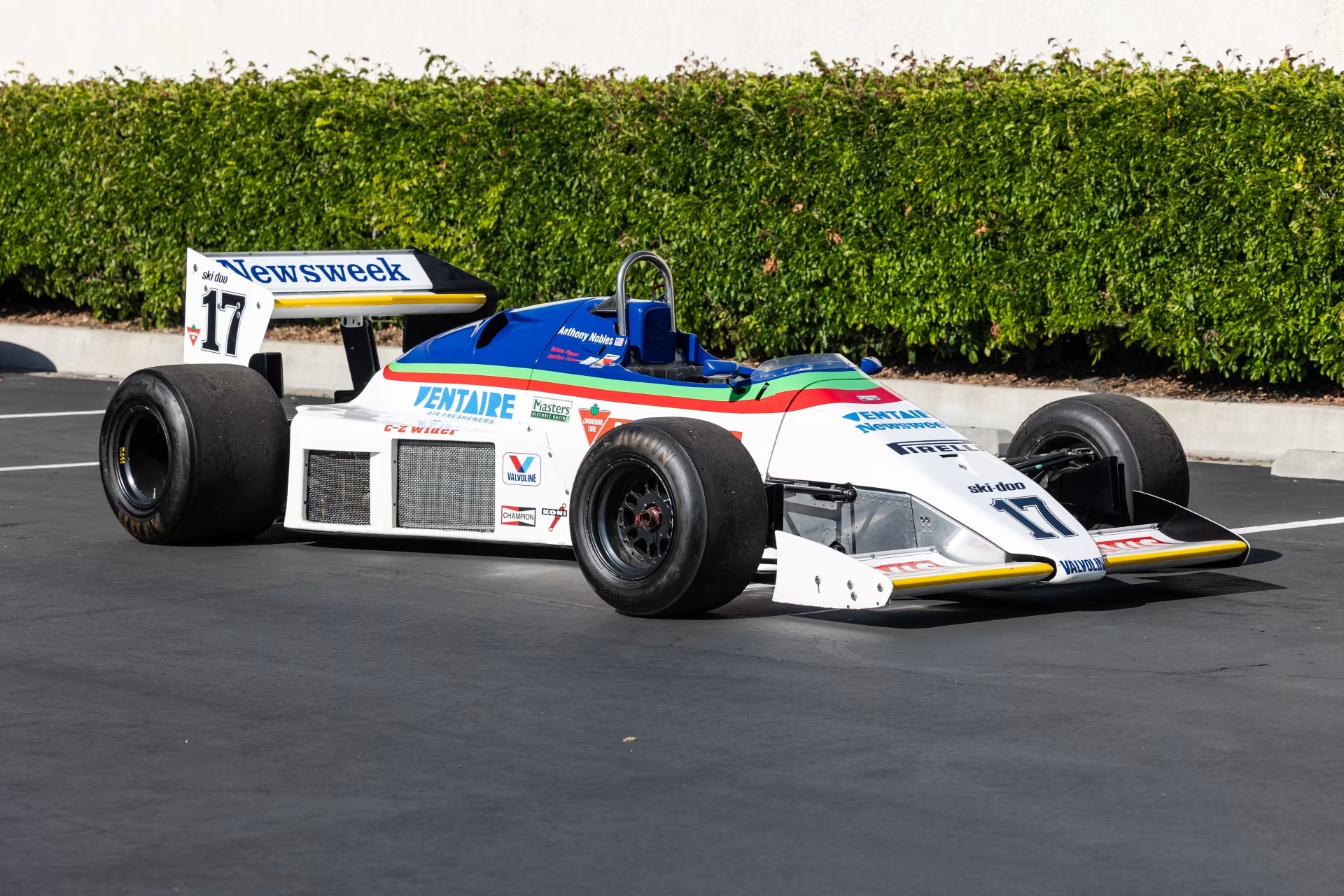
Another Formula 1 race car from a completely different era, the RAM March 01, is one of the final privateer efforts to compete in Grand Prix racing. The team was a partnership formed by sportsmen Mike Ralph and John MacDonald. RAM competed in Formula 1 from 1976-1985. A number of notable drivers competed for the team including future Formula 1 World Champion Alan Jones, along with future Indy Car drivers Kevin Cogan and Derek Daly. In 1983, the team had its struggles, with the top finish being a 12th by Kenny Acheson. Jacques-Joseph Villeneuve, the brother of former driver Gilles Villeneuve and uncle of future Formula 1 World Champion Jacques Villeneuve, raced the car at the Canadian Grand Prix, and future Indy Car driver Eliseo Salazar drove to a 15th-place finish in Brazil.
The RAM March 01 has competed in a number of vintage Formula 1 events in recent years, with a first place in the Classic Grand Prix Algarve at the Autodromo Internacional do Algarve in Portimao, Portugal. Wheeling this car, driver Bob Berridge captured the Thoroughbred Grand Prix Championship in 2014.
Powered by a 3.0L/530 HP Ford Cosworth DFY V-8 engine rebuilt by Australian Performance Engineering, the aluminum monocoque chassis features a Hewland FGA 400 5-speed manual transmission and has seen only five vintage events since the engine rebuild. Still dressed in its white and blue No. 17 livery, this RAM March 01 is an important link to a simpler time in Formula 1 when sportsmen could decide to go racing without a major corporate sponsor or automotive manufacturer backing.
1961 Lotus 20/22 Formula Junior Monoposto
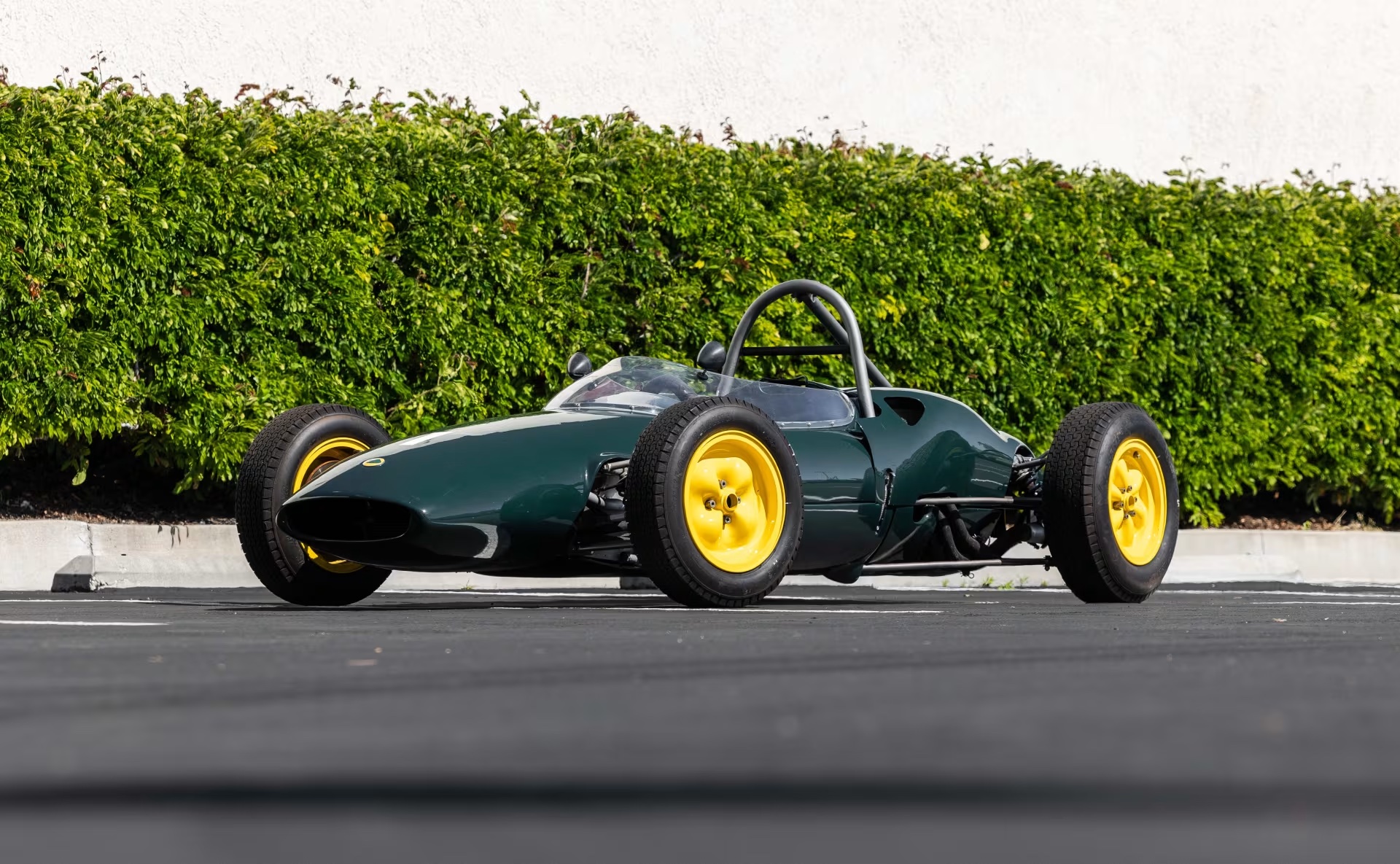
Not all memorable race cars compete in the top categories of the sport. Any racer worth their salt has had to come up through the ranks on their way to ultimate greatness. Some of the world’s finest drivers had one thing in common: they drove a Lotus. Winner of the 1986 North American Formula Junior Championship when raced by Chris Ball, this 1961 Lotus 20/22 Formula Junior Monoposto features a beautiful green No. 1 livery accented by yellow wheels and a red interior, looking just like some of the cars that two-time Formula 1 World Champion and Indianapolis 500 winner Jim Clark drove back in the day.
Lotus Formula Junior marque expert Peter Denty restored the car to its current beauty. Powered by a mighty 1100cc inline 4-cylinder engine stamped with the No. 140-90, this little racer is motivated through a slick Hewland Mk 6 5-speed manual transmission mated to a Tilton clutch and pressure plate. The Lotus comes equipped with Smiths instruments, a fire suppression system, fuel cell, alloy radiator and a super starter. It is supplemented by documentation related to the car’s history, with log books, service records as well as a PHP build sheet.
2003 Lola B02/00 Two-Seater
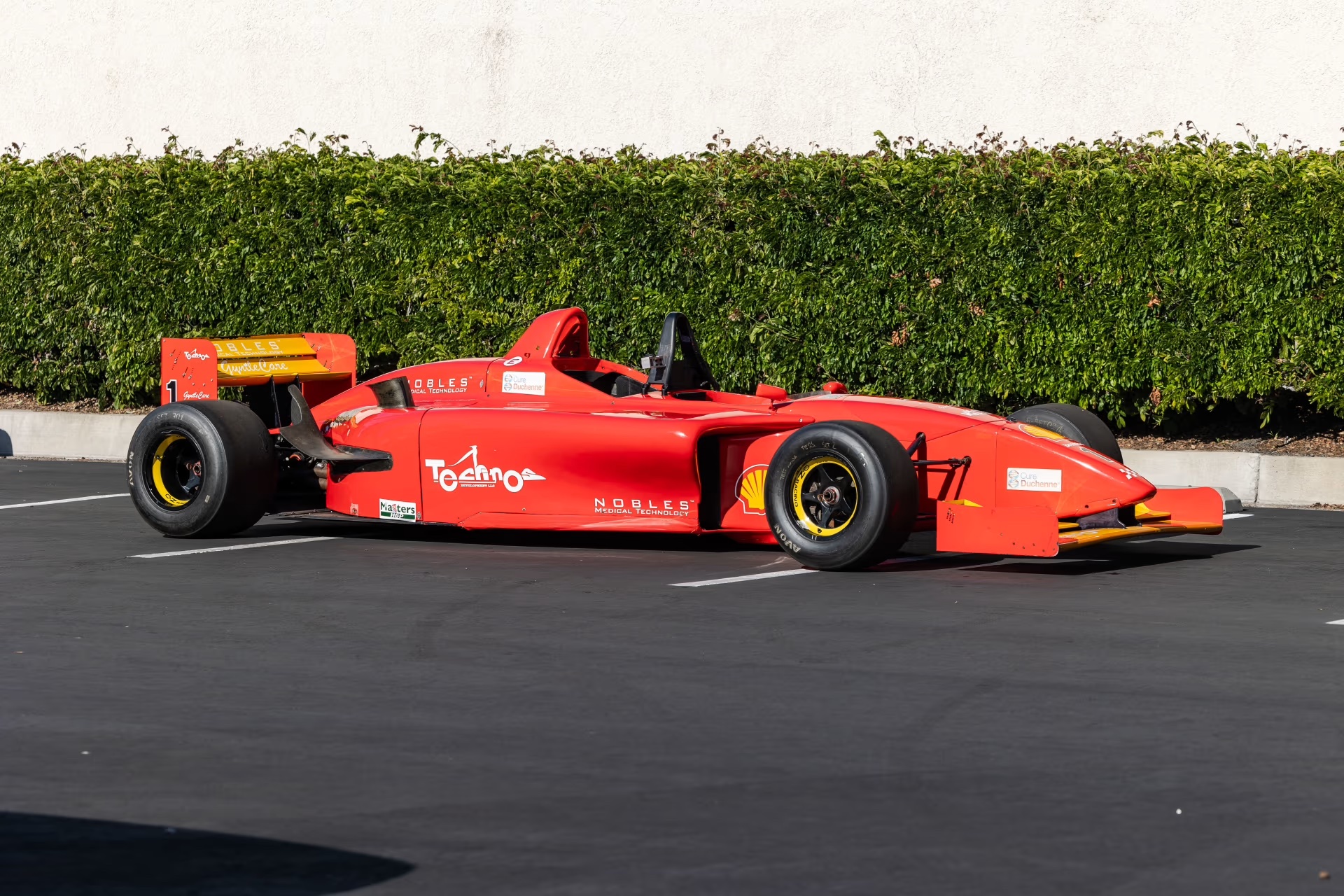
In the 21st century, fans of auto racing can get closer to the sport than ever before. To this day, the IndyCar Series has an amazing two-seater Indy Car that provides rides to both fans and celebrities at something approximating real racing speeds.
Built by Lola Cars of Huntingdon, England, this 2003 Lola B02/00 Two-Seater is based on the 2003 Lola Indy Car that successfully won many races in the CART series at that time. Powered by a 3.0L Zytek-Judd KV F3000 DOHC V-8 engine paired with a 6-speed sequential manual transmission shifted through paddles, this Lola sports a red and yellow No. 1 livery with a black interior.
If a professional racer is at the wheel of the Lola, the passenger sitting behind will get a close-up view of what it’s like to drive a modern racing car in the heat of competition. For the lucky ones who have been through that experience, they count it as the thrill of a lifetime.
These four race cars offered at Monterey run the gamut from a pair of Formula 1 cars to Formula Junior to a two-seater created to give race fans a feeling few people will ever experience. Each one is special in its own way.
OFFERED AUGUST 15-17 AT MONTEREY 2024
Report by Alex Yovanovic for mecum.com
Photography by Luke Crabtree


